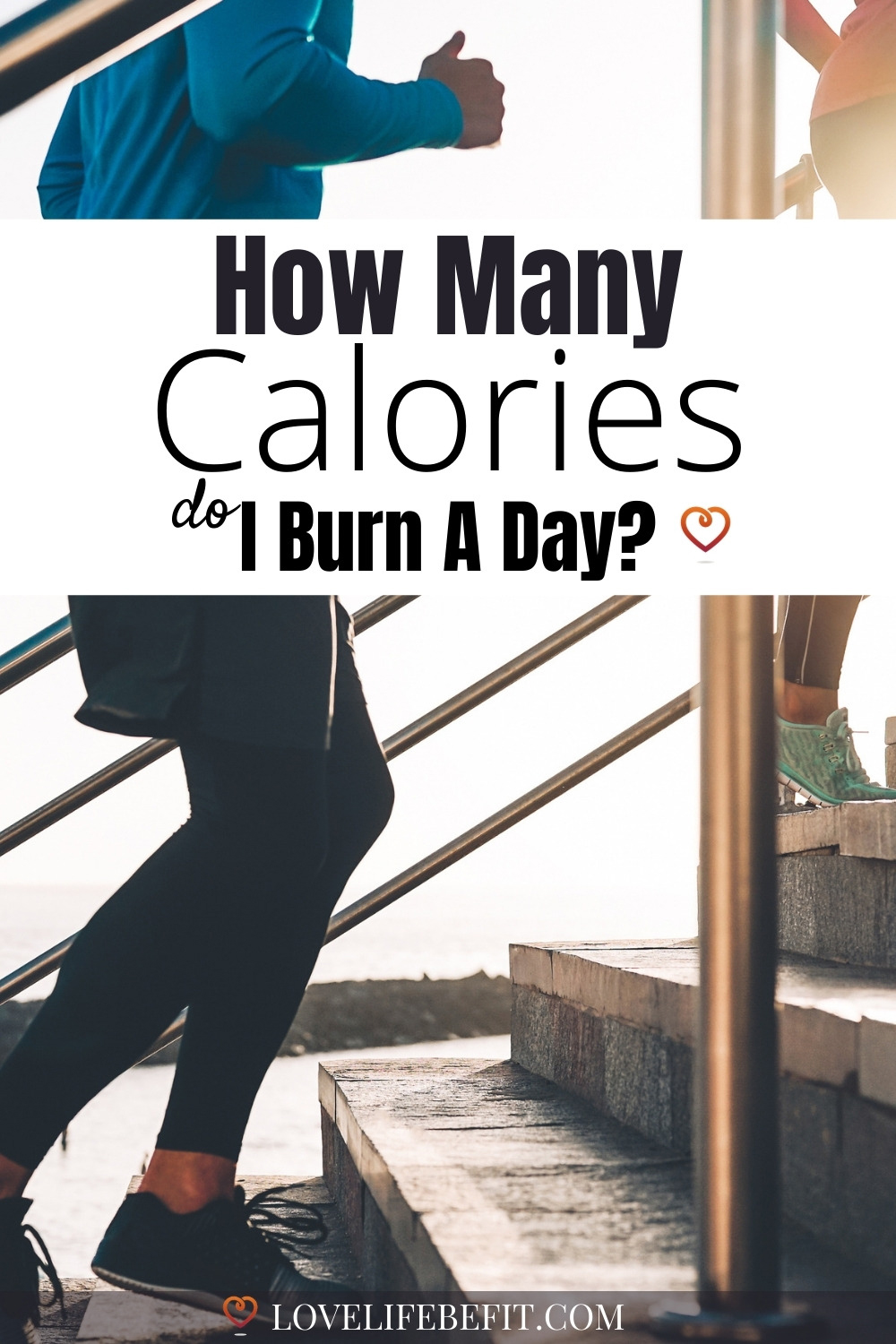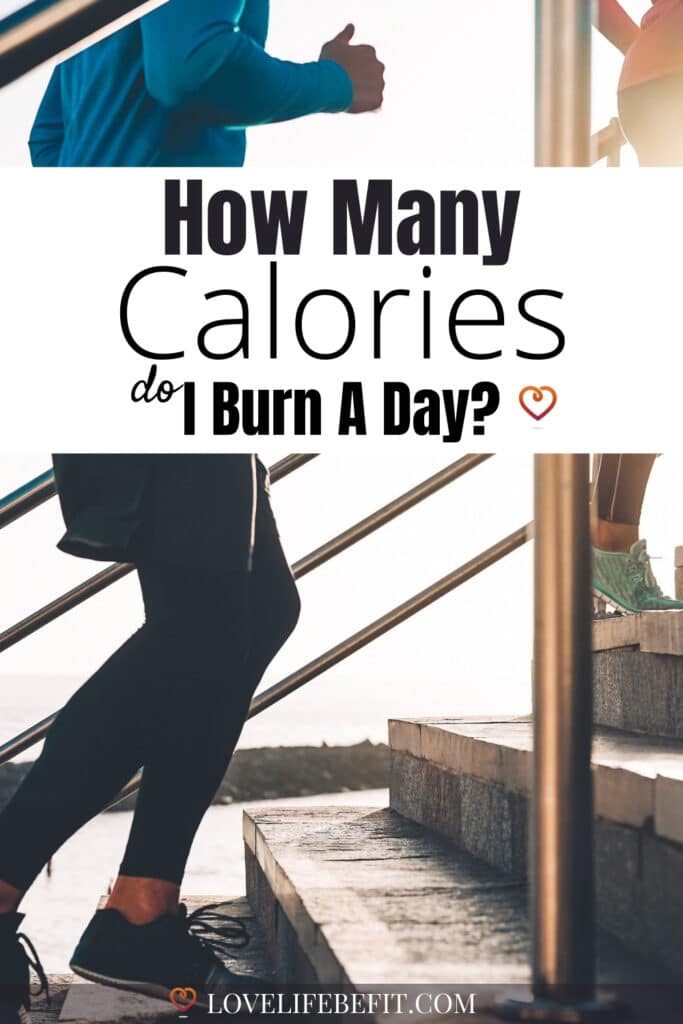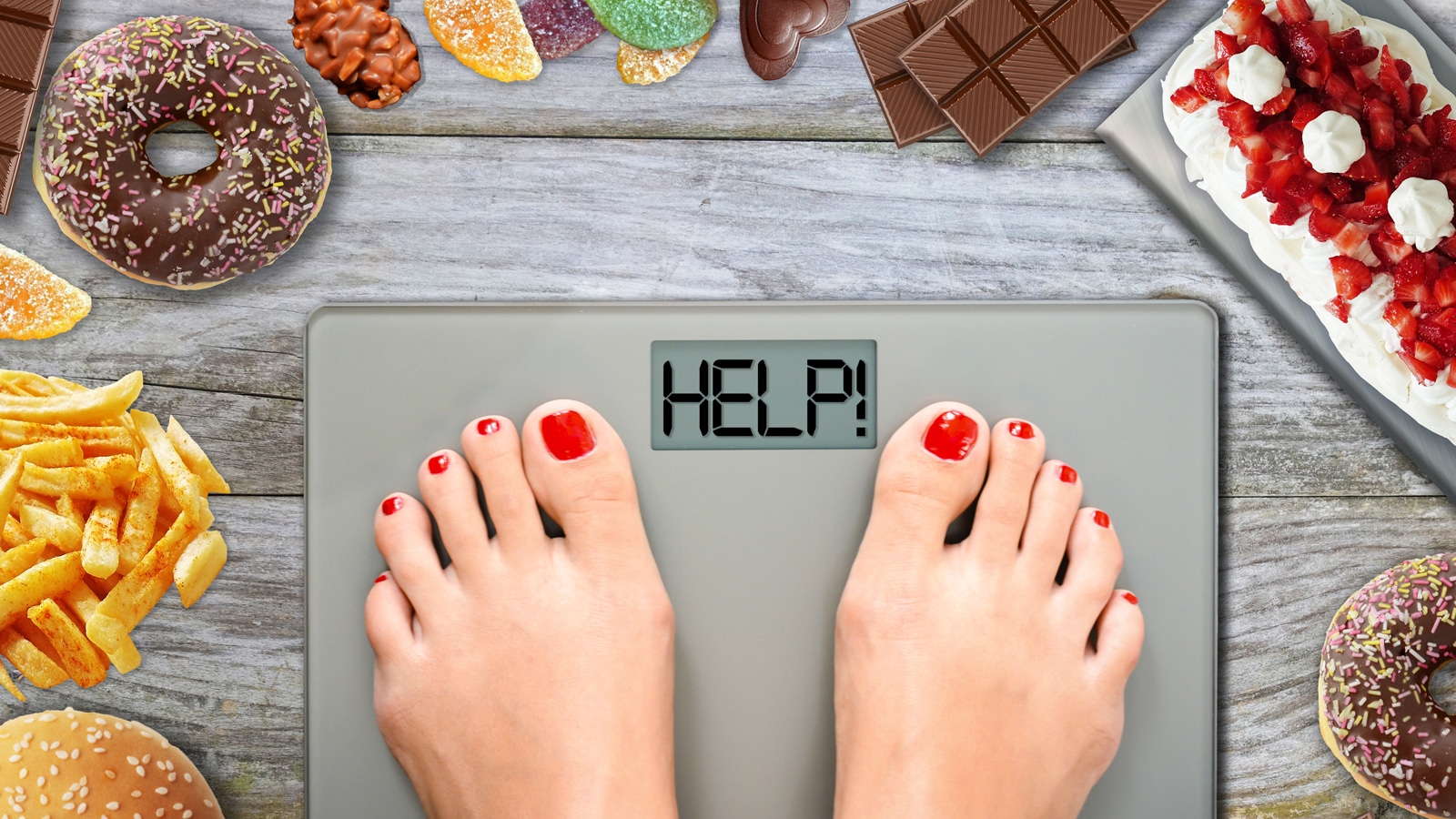How Many Calories Do I Burn A Day?
Did you know that digesting food contributes to your daily calorie burn? In case you’re wondering – it doesn’t mean that eating more is a way to lose weight!
There are no actual negative-calorie foods. Even low-calorie foods like celery have diet-induced thermogenesis (DIT) of less than 10% of the food’s energy content.
It’s just an example of the complexity of the human body and the many different ways our bodies use energy.

Daily Calorie Burn
Based on the Dietary Guidelines for Americans (2020-2025), most female adults typically need 1600 to 2400 calories per day, and male adults 2000 to 3200.
These figures allow for some walking but don’t account for highly active people, for example, runners, who exercise regularly at a high intensity.
Age, gender, body composition, and metabolism make up some of the differences in total energy expenditure (TEE) for different people – but calories burned during exercise can have the biggest influence on your daily total energy needs.
Total Energy Expenditure
Your total daily energy expenditure (TDEE) is a combination of four different factors:
- Basal metabolic rate (BMR)
- Non-exercise activity thermogenesis (NEAT)
- Thermic effect of food (TEF)
- Calories burned during exercise.
Add up all these different ways your body burns calories and you get your body’s daily energy needs. So what do the different components mean?
Basal Metabolic Rate (BMR)
This is also called resting metabolic rate (RMR). They’re almost the same thing – think of BMR as a more accurate value of your resting energy expenditure.
Without any activity, this is the energy your body burns to function while at rest. It’s measured under controlled conditions and accounts for breathing, circulation, maintaining body temperature, and other bodily functions.
BMR makes up 60-75% of TEE in sedentary individuals but can be much lower for very active people.
Non-Exercise Activity Thermogenesis (NEAT)
NEAT refers to energy your body uses for activities other than exercise. It includes walking around the office or house, fidgeting, doing household chores, and standing.
NEAT can vary greatly between individuals as some people are naturally more active throughout their day-to-day activities. Some people just can’t sit still!
Thermic Effect of Food (TEF)
TEF is the energy your body uses to digest, absorb, and assimilate food. It’s not a big contributor to TEE – only about 5-10%. Certain foods such as protein have a slightly higher TEF but it’s not enough to make a difference in weight loss.
Calories Burned During Exercise
This one is pretty self-explanatory. The type, intensity, and duration of exercise will greatly affect how many calories you burn during a workout. The average person burns 15-30% of TEE for exercise and non-exercise activity.
Some people never exercise and their only activity comes from NEAT. If you have a physical job this may be enough to keep your weight in check. For most people, adding in exercise will greatly increase the amount of energy they use every day, help prevent weight gain, and improve overall health.

How Do I Calculate My Daily Calorie Needs
There are three different ways of measuring your daily calorie needs:
Metabolic Testing
The most accurate way is metabolic testing where your BMR or RMR is measured under controlled conditions. It will tell you the total number of calories you burn during rest.
Testing used to be only available in hospitals or laboratories but it’s now possible in gyms or health clubs at more affordable prices.
The accuracy of these tests is variable. A BMR test in a laboratory where the person being tested has fasted for 12 hours beforehand will be more accurate than a health club RMR test.
Provided an RMR is carried out by a qualified technician and you’ve fasted and refrained from exercise beforehand, you should get a reliable result.
Add the calories you burn during rest to your non-exercise and exercise-related activity to get your total daily calorie needs.
Activity Monitors
Fitness trackers and activity trackers monitor your daily movements to provide an estimate of the number of calories burned each day. The best ones use your heart rate, height, weight, and gender for a more accurate estimate.
But these devices aren’t always reliable and can be out by more than 10% when estimating TEE. Studies found they tend to greatly underestimate calorie burn during intense exercise and overestimate it during light activity.
Online Calculators
You can use an online calculator, like this one, to measure your daily calorie burn. It won’t be as accurate as laboratory testing but it’s a good benchmark and insight into how you burn calories and your daily calorie needs.
Experiment with the calculator to get different results for different activity levels. You can set the activity level to sedentary to get a good estimate of BMR + NEAT + TEF and use this calorie burned by activity calculator to estimate your exercise-related calories burned.

How Do You Calculate Calories Burned?
The best method is to use the Mifflin-St Jeor equation. It’s an updated 1990 version of the widely used Harris-Benedict equation originally derived in 1919.
It’s based on calculating your RMR and then multiplying it by an activity factor.
Step 1: Calculate your RMR
Based on the Mifflin-St Jeor equation:
RMR = 9.99*weight (Kg) + 6.25*height (cm) − 4.92*age + 166*sex (M = 1; F = 0) −161 where M=male and F=female.
For example: calculate RMR for a 30-year-old male who weighs 80 kg and is 185 cm tall and has a slightly active lifestyle.
RMR = 9.99*80 + 6.25*185 – 4.92*30+ 166 – 161 = 1812 calories
Step 2: Apply your activity level
You can use an activity multiplier to quickly assess your daily calorie burn based on your RMR.
- Sedentary lifestyle = BMR x 1.2 (little or no exercise, desk job)
- Slightly active = BMR x 1.375 (light exercise or sports 1-3 days/week)
- Moderately active = BMR x 1.55 (moderate exercise or sports 3-5 days/week)
- Very active = BMR x 1.725 (hard exercise or sports 6-7 days/week)
- Extra active = BMR x 1.9 (very hard exercise daily or physical job)
Choose your activity level and apply it to your RMR to get your daily calorie needs to maintain weight.
In the example, the 30-year-old man has a slightly active lifestyle. Using the 1.375 multiplier, his estimated number of calories for TEE = 1.375 * 1812 = 2492
Alternative to Steps 1 and 2
Enter your numbers into the daily calories burned calculator to get the same answer. The calorie calculator uses the same formula and the math has been done for you!
Using Your Result To Lose Weight
To hit your weight loss goals, make sure the calories from the food you eat are less than the number of calories you burn. Aim to increase your calorie expenditure through exercise and make small improvements to your diet.







